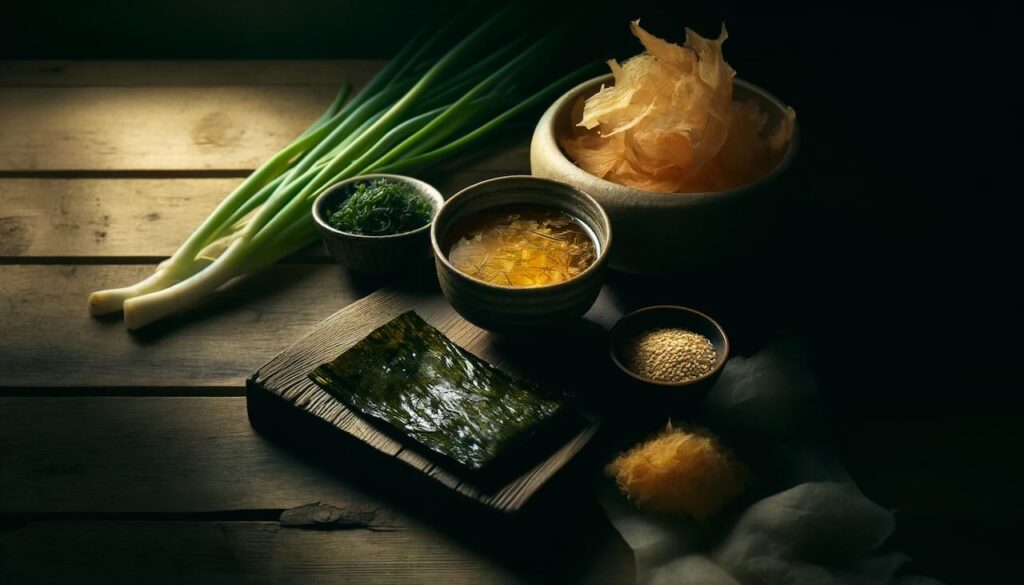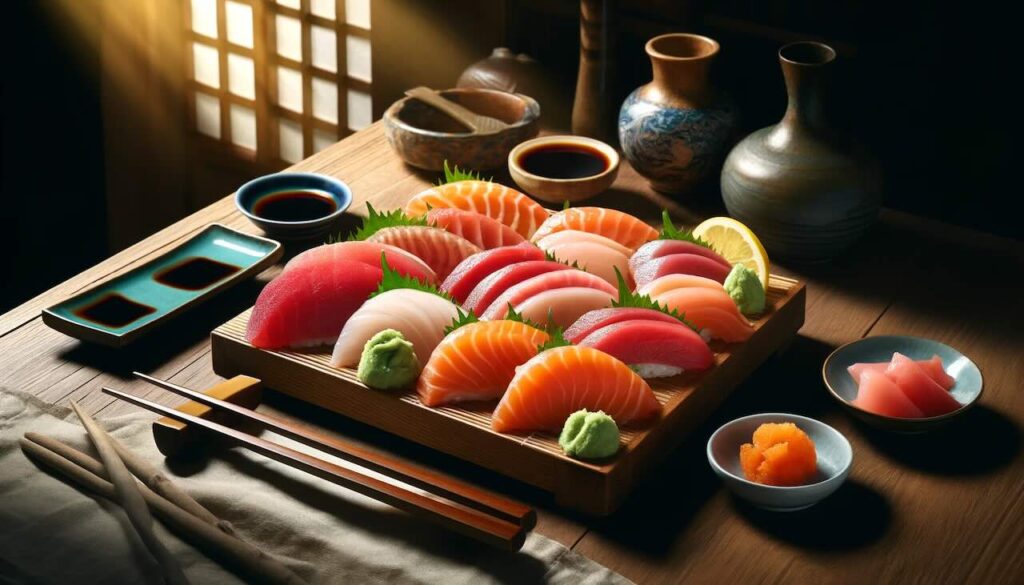Sashimi — thinly sliced raw fish artfully arranged on a plate — is one of Japan’s most refined and internationally recognized culinary expressions. But is this elegant practice uniquely Japanese? Or is it part of a broader human fascination with raw seafood that spans cultures and continents?
In this article, we’ll explore how sashimi fits into both Japan’s cultural identity and a global tradition of honoring the purity of the sea.
For a full introduction to the history, etiquette, and cultural significance of sashimi, visit:
👉 The Complete Guide to Sashimi: Japan’s Art of Raw Fish and Cultural Refinement
The Japanese Evolution: How Sashimi Became an Art
The practice of consuming raw fish in Japan dates back over a thousand years, first appearing in the Heian period (794–1185). Early forms of sashimi involved chopping seafood into rough chunks, often paired with salty or fermented sauces. However, this was far from the delicate slices we recognize today.
True sashimi — emphasizing knife mastery, thin slicing, and minimal garnishing — crystallized during the Edo period (1603–1868). The refinement of hocho (Japanese knife) techniques allowed chefs to highlight texture, freshness, and seasonality like never before.
Sashimi became a reflection of core Japanese culinary values:
- Simplicity and restraint
- Seasonal appreciation (shun)
- Respect for craftsmanship (shokunin spirit)
- Mindful dining and aesthetic beauty
You can explore sashimi’s full historical development here:
👉 The Origins of Sashimi: Exploring Japan’s Raw Fish Culture and Beyond
Global Cousins: Raw Fish Traditions Around the World
While sashimi stands as Japan’s masterful interpretation of raw seafood, many other cultures have developed their own ways to enjoy the ocean’s bounty in its purest form.
Peru: Ceviche
Peruvian ceviche features diced raw fish marinated in citrus juices, typically lime or lemon, often combined with onions, chili peppers, and fresh herbs. The acidity partially “cooks” the fish through protein denaturation, creating a texture distinct from sashimi’s untouched flesh.
- Flavor profile: Tangy, vibrant, and refreshing
- Cultural role: Coastal comfort food, often served with corn or sweet potato
- Shared value: Honor for seafood freshness
Italy: Carpaccio
In Italy, carpaccio refers to thinly sliced raw fish or meat, typically drizzled with olive oil, lemon juice, and herbs.
- Flavor profile: Delicate yet boldly seasoned, combining Mediterranean simplicity with high-quality ingredients
- Key difference: Uses sauces and oils where sashimi favors pure presentation
Korea: Hoe (회)
Korean hoe (hweh) features thin slices of raw fish, typically dipped in spicy gochujang-based sauces, accompanied by garlic, lettuce, and kimchi.
- Cultural experience: Social, communal, and often paired with soju or makgeolli
- Key difference: Bolder, spicier, more interactive dining
While preparation methods vary, these global traditions share a universal theme: respect for freshness, seasonality, and skilled handling.
Food Safety and Global Standards
Across all cultures, eating raw fish demands careful preparation:
- In Japan: Government regulations mandate that certain fish (like tuna and mackerel) be frozen at -60°C (-76°F) to eliminate parasites such as Anisakis.
- Globally: Similar freezing standards, strict sourcing, and hygienic handling are emphasized in top restaurants and fisheries.
For health tips on eating sashimi safely, visit:
👉 The Health Benefits and Risks of Eating Sashimi: What You Need to Know
Wasabi: A Unique Japanese Touch
What makes sashimi uniquely Japanese — beyond its presentation — is the use of wasabi. Traditionally paired for both flavor and food safety, wasabi offers antibacterial properties and a sharp, clean counterbalance to the fish’s richness.
For more on wasabi’s role, visit:
👉 Why Is Wasabi Served with Sashimi? Unveiling the Secrets Behind This Classic Pairing
A Global Language of the Sea
Despite cultural differences, sashimi, ceviche, carpaccio, and hoe all point to a shared human instinct: the desire to experience seafood at its purest, celebrating freshness, craftsmanship, and the ocean’s generosity.
What distinguishes sashimi is how Japan has elevated this practice into a form of artful minimalism — blending culinary precision, deep cultural philosophy, and aesthetic harmony.
Conclusion
Sashimi stands as a uniquely Japanese expression within a much larger global appreciation for raw fish. Around the world, people have discovered creative ways to highlight seafood’s natural beauty, yet Japan’s sashimi remains singular in its combination of:
- Masterful knife skill
- Purity of flavor
- Seasonal mindfulness
- Aesthetic simplicity rooted in Zen-like refinement
By understanding both its cultural roots and global connections, sashimi becomes not just a meal, but a lens into how humans across diverse civilizations honor nature’s gifts — one perfect slice at a time.


